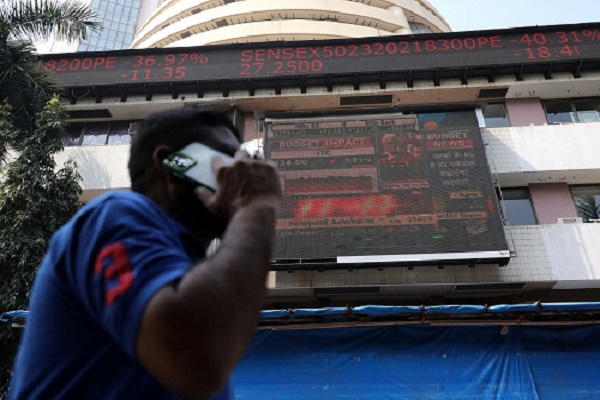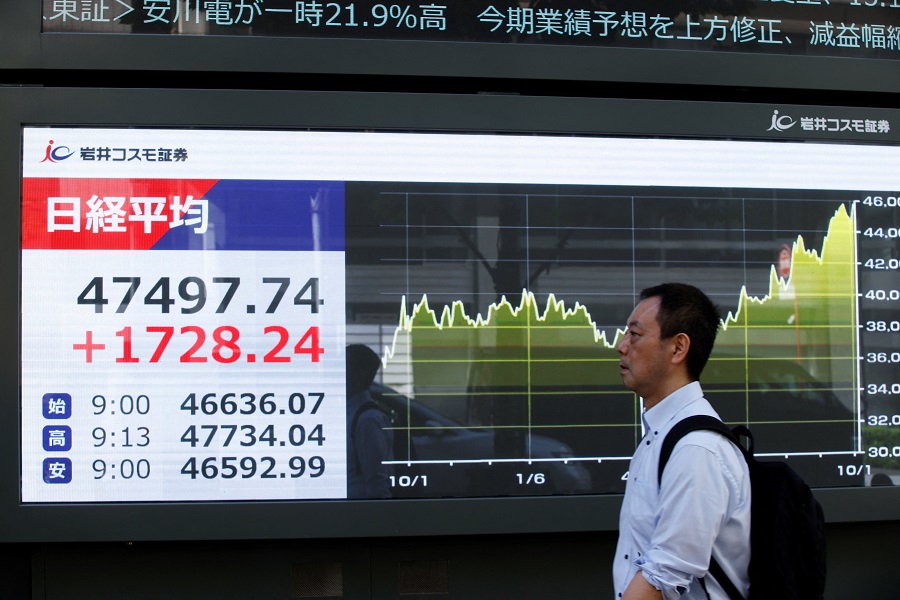Silver trading range for the day is 68690-71030 - Kedia Advisory

Gold:
Gold faced a slight setback, closing down by -0.1% at 61443, driven by a warmer U.S. inflation report. The report suggested that the Federal Reserve might not implement interest rate cuts this spring, dampening expectations among market participants. The data revealed that consumer inflation remained elevated, with the consumer price index up 3.1% in January from a year earlier, slightly higher than the expected 2.9%. Core inflation, excluding energy and food prices, rose 3.9% for a second consecutive month, indicating persistent price pressures. Despite these figures, U.S. Treasury Secretary Janet Yellen expressed optimism, emphasizing progress in the fight against inflation. Yellen pointed to a 3.1% year-on-year CPI inflation figure for January, downplaying a surprise 0.3% month-on-month surge. She highlighted the Biden administration's achievements in lowering inflation, citing reduced prices for key household expenditures like gasoline, eggs, and airline fares. From a technical perspective, the market is witnessing fresh selling, with open interest gaining by 0.15% to settle at 13738. The prices experienced a decline of -61 rupees. Gold is currently finding support at 61260, and a breach below this level could test 61080. On the upside, resistance is likely at 61550, and a move beyond that could lead to prices testing 61660. Investors are closely monitoring the Federal Reserve's stance on interest rates, with the latest inflation data adding uncertainty to the outlook.
Trading Ideas:
* Gold trading range for the day is 61080-61660.
* Gold fell in the wake of a warmer U.S. inflation report
* Fed policymakers waiting for more evidence of easing price pressures before they cut interest rates
* The consumer price index was up 3.1% in January from a year earlier, down from its 3.4% pace in December
Silver:
Silver experienced a rebound, settling up by 0.74% at 70152, driven by short covering. This recovery followed a drop in prices as traders revised their expectations for a Federal Reserve interest rate cut in light of unexpectedly high U.S. inflation figures. The U.S. consumer price index (CPI) for January showed a 3.1% year-on-year increase, surpassing the anticipated 2.9%. Despite this, money markets are currently pricing in no Fed cut in March, with a 53% chance of a cut in June. In contrast, UK inflation did not accelerate as expected in January, potentially relieving pressure on the Bank of England (BoE) to maintain current interest rates for an extended period. Meanwhile, Japanese currency officials expressed concern over rapid and speculative moves in the yen. Boston Federal Reserve Bank President Susan Collins expressed the belief that the U.S. central bank might cut interest rates by three-quarters of a percentage point in 2024, contingent on data confirming a path to 2% inflation amid a robust labor market. According to the latest Silver Institute report, global silver demand is projected to reach 1.2 billion ounces in 2024, marking the second-highest level on record. From a technical standpoint, the market is undergoing short covering, with open interest dropping by -8.08% to settle at 29149. Prices have increased by 513 rupees. Silver is currently finding support at 69420, and a breach below this level could test 68690. On the upside, resistance is likely at 70590, and a move beyond that could lead to prices testing 71030.
Trading Ideas:
* Silver trading range for the day is 68690-71030.
* Silver gains on short covering after prices dropped as hot U.S. inflation cools Fed rate cut bets
* US CPI in January gained 3.1% from a year earlier, versus an expected 2.9% rise
* Data showed UK inflation did not accelerate in January as expected.
Crude Oil:
Crude oil faced a downturn, settling down by -1.43% at 6397, primarily attributed to the EIA data revealing a significant surge of over 12 million barrels in US crude oil stocks for the previous week. The substantial increase in inventories raised concerns about oversupply, putting downward pressure on prices. In contrast, the Organization of the Petroleum Exporting Countries (OPEC) maintained their projections in their monthly report, anticipating a rise in world oil demand by 2.25 million barrels per day (bpd) in 2024 and 1.85 million bpd in 2025. However, these forecasts remained unchanged from the previous month. Despite positive data, the broader sentiment was affected by the larger-than-expected increase in U.S. crude oil inventories by 8.52 million barrels, contributing to the overall bearish sentiment. Iraq's commitment to OPEC decisions and adherence to a second voluntary cut, limiting production to no more than 4 million bpd, influenced market dynamics. Iraq's current crude oil exports range between 3.35 million and 3.4 million bpd. Additionally, ongoing talks with international oil companies operating in Iraqi Kurdistan are progressing, offering hope for the resolution of a dispute that has halted northern oil exports from Iraq. From a technical standpoint, the market is witnessing long liquidation, with open interest dropping by -30.52% to settle at 5446. Prices experienced a decline of -93 rupees. Crude oil is finding support at 6339, and a breach below this level could test 6280. On the upside, resistance is likely at 6500, and a move beyond that could lead to prices testing 6602.
Trading Ideas:
* Crudeoil trading range for the day is 6280-6602.
* Crude oil dropped after a surge of over 12 million barrels in US crude oil stocks
* Industry report showed a sharp decline in U.S. fuel stockpiles amid a refinery outage.
* World oil demand will rise by 2.25 mbpd in 2024 and by 1.85 million bpd in 2025 - OPEC
Natural gas:
Natural gas prices experienced a decline of -3.29%, settling at 135.1, driven by a combination of heightened production levels and subdued demand. The resumption of gas well operations after a severe cold snap in mid-January contributed to production nearing record levels in the U.S. Lower 48 states. However, technical issues at Freeport LNG's export plant impeded gas flow to the country's LNG export facilities, with a return to record levels expected only when the plant is fully operational. Government data revealed that storage levels remain 10.6% higher than the seasonal average, indicating a surplus that has contributed to the downward pressure on prices. Financial company LSEG reported a rise in gas output to an average of 105.8 billion cubic feet per day (bcfd) in February, up from 102.1 bcfd in January but still below the monthly record high of 106.3 bcfd in December. Meteorologists projected a shift in weather conditions, turning from warmer than normal to colder than normal on February 17-18, before returning to mostly warmer-than-normal from February 19-28. With seasonally colder weather approaching, LSEG forecasted an increase in U.S. gas demand in the Lower 48, including exports, from 124.0 bcfd this week to 129.0 bcfd next week. From a technical standpoint, the market is undergoing long liquidation, with open interest dropping by -3.13% to settle at 74427. Prices have decreased by -4.6 rupees. Natural gas is finding support at 132.1, and a breach below this level could test 129.1. On the upside, resistance is likely at 139.7, with a potential move to 144.3.
Trading Ideas:
* Naturalgas trading range for the day is 129.1-144.3.
* Natural gas dropped due to the combination of augmented production levels and subdued demand.
* Data showed storage levels remain 10.6% higher than the seasonal average.
* Gas output in the U.S. Lower 48 states rose to an average of 105.8 bcfd so far in February, up from 102.1 bcfd in January
Copper:
Copper closed down by -0.25% at 705.9, influenced by U.S. inflation data that raised concerns about potential delays in high-interest rate cuts. The unexpectedly higher U.S. consumer prices in January prompted traders to recalibrate expectations for the timing and magnitude of interest rate reductions. The current pricing in Federal funds futures indicates no rate cut in March, with less than a 50% chance of easing in May, according to LSEG's rate probability app. LME daily data revealed a decline in copper stocks in LME-registered warehouses, reaching the lowest level since September after 850 tons of outflows. However, the persistently challenging macroeconomic conditions in the Chinese economy, illustrated by a fourth consecutive contraction in the manufacturing sector based on official PMI data, weighed on the outlook for base metals. The Yangshan copper premium experienced a continuous decline as factories refrained from metal purchases, coupled with a significant increase in inventories in major Chinese warehouses, rising over 120% year-to-date to nearly 70,000 tonnes. According to the International Copper Study Group (ICSG), preliminary data from January indicated a 1% increase in world copper mine production over the first 11 months of 2023. From a technical perspective, the market is undergoing long liquidation, with open interest dropping by -5.95% to settle at 4981. Prices declined by -1.75 rupees. Copper is currently finding support at 703.8, with a potential test of 701.5, while resistance is likely at 708.7, with a possible move to 711.3.
Trading Ideas:
* Copper trading range for the day is 701.5-711.3.
* Copper prices dropped on the back of U.S. inflation data.
* Federal funds futures currently price in no rate cut in March and a lower than 50% chance of easing in May
* In January indicates that world copper mine production increased by approximately 1% over the first 11 months of 2023.
Zinc:
Zinc recorded a modest gain of 0.48%, settling at 207.7, driven by developments surrounding Russia's new Ozernoye mine. The mine, set to be Russia's largest zinc producer, faced delays in zinc concentrate production until at least the third quarter of 2024, with a full capacity ramp-up now expected by 2025. The project has encountered challenges, including Western sanctions and a plant fire in November, pushing back its original production timeline of 2023. Despite these disruptions, sustained price rallies in zinc are contingent upon a substantial increase in demand and a shift in market focus from projected surpluses. Currently, concerns persist due to weakened demand in China's property sector, resulting in a recent rebound in zinc inventories. On the London Metal Exchange (LME), zinc stocks climbed 14% over the past 10 days to reach a one-month high of 216,675 metric tons. This follows an 18% decline in LME stocks between late December and late January. Meanwhile, on the Shanghai Futures Exchange, zinc stocks surged by 21% in a week, partly attributed to restocking ahead of China's Lunar New Year holiday. The weakness in the zinc market is further highlighted by the discount of the LME zinc cash contract to the benchmark three-month contract, closing at $9.50 a ton, compared to a premium of $11 in mid-December. From a technical perspective, the market is experiencing short covering, with open interest dropping by -2.19% to settle at 4554. Prices rose by 1 rupee. Zinc is currently finding support at 206.4, with a potential test of 205, while resistance is likely at 208.7, with a possible move to 209.6.
Trading Ideas:
* Zinc trading range for the day is 205-209.6.
* Zinc gains as Russian new Ozernoye mine has delayed the start of zinc concentrate production
* Zinc inventories have rebounded recently as demand has been hit by China's property troubles.
* China's refined zinc output in December 2023 was 590,900 mt, an increase of 2.05% month-on-month
Aluminium
Aluminium prices saw a rise of 0.5%, settling at 201.1, driven by a gradual reduction in global manufacturing inventories, a recovering terminal consumer market, and increased demand in the steel sector. Despite these positive factors, the upside for aluminium remains limited due to a strong U.S. dollar and pessimistic industrial sentiment in China, the world's top consumer of base metals. Lingering macroeconomic challenges in China continue to cast a shadow on the outlook for base metals. The share of available aluminium stocks of Russian origin in LME-approved warehouses remained stable at 90% in January, according to LME data. Notably, Britain's restrictions on the physical delivery of Russian-made base metals since December 15 have not disrupted the flow of Russian metal through LME-registered warehouses. The quantity of Russian primary aluminium stocks on LME warrant decreased to 286,750 metric tons in January from 338,375 in December. Market participants are adjusting their expectations for Federal Reserve interest rate cuts, with the latest government report showing higher-than-expected consumer inflation in January. Traders now anticipate the Federal Reserve to delay any interest rate cuts until June, reflecting the consumer price index's 3.1% year-on-year increase. Technically, the aluminium market is undergoing short covering, with open interest dropping by -6.41% to settle at 2790. Prices increased by 1 rupee. Aluminium is currently finding support at 199.8, with a potential test of 198.3, while resistance is likely at 202.3, with a possible move to 203.3.
Trading Ideas:
* Aluminium trading range for the day is 198.3-203.3.
* Aluminium gains as global manufacturing sector recovery continues in 2024
* Persistent macroeconomic headwinds in China, continued to hamper the outlook for metals.
* Share of Russian aluminium in LME warehouses remains at 90%
Cotton:
The cotton market experienced a modest decline of -0.07% yesterday, settling at 58560, primarily attributed to concerns over supply dynamics and sustained consumption trends. The latest report on the 2023/24 U.S. cotton balance sheet revealed a reduction in ending stocks, driven by increased exports and decreased mill use, despite unchanged production figures. Export forecasts were revised upwards by 200,000 bales to 12.3 million, reflecting robust shipment activities and sales momentum. However, despite these positive export trends, ending stocks are estimated at 2.8 million bales, constituting 20 percent of total disappearance. Globally, the 2023/24 cotton ending stocks saw a decrease, with lower beginning stocks and production contributing to reduced supplies. While world consumption remained relatively stable, shifts were observed across different regions, with notable increases in China and Vietnam counterbalanced by declines in Turkey, the United States, and Thailand. In the U.S., the USDA weekly sales report indicated a significant surge in net sales for the 2023/24 period, driven by strong demand from China and Vietnam. Exports consistently surpassed 200,000 bales in five of the last six reports, reaching a marketing-year peak at 396,700 bales. Meanwhile, the CAI maintained its estimates for domestic consumption and production for the 2023-24 season, based on inputs from various sources. Technically, the market is undergoing long liquidation, with open interest remaining unchanged at 419 while prices dipped by -40 rupees. Support for Cottoncandy is seen at 58340, with a potential test of 58130 levels, while resistance is likely at 58760, with a potential breakout leading to testing 58970 levels. Overall, market participants are closely monitoring supply dynamics, consumption trends, and technical indicators for further insights into price movements.
Trading Ideas:
* Cottoncandy trading range for the day is 58250-60130.
* Cotton prices gained spurred by concerns over supply
* USDA weekly sales report a 69% increase in exports from previous week
* CAI estimates domestic consumption for the 2023-24 season to remain flat at 311 lakh bales.
* In Rajkot, a major spot market, the price ended at 27158.85 Rupees gained by 0.17 percent
Turmeric:
Turmeric prices recorded a modest increase of 0.48%, settling at 14970, as buying activities remained subdued in anticipation of stock releases ahead of the new crop season. However, the downside was limited due to reduced supplies in the spot market. Delayed harvesting of the new crop and tighter ending stocks are anticipated to sustain positive sentiments in the near term. The market also expects an uptick in exports with upcoming festivals, though pressure is observed from improved crop conditions favored by favorable weather. Concerns arise in Maharashtra over the location of PM Modi's Turmeric Board in Telangana, impacting farmer sentiments. Expectations indicate a 20–25% decline in turmeric seeding, particularly in Maharashtra, Tamil Nadu, Andhra Pradesh, and Telangana, as farmers shift priorities. Profit booking also influenced prices. Turmeric exports during April-November 2023 dropped by 1.07% to 1,10,745.38 tonnes compared to the same period in 2022. In November 2023, exports fell by 15.34% compared to October, and by 30.78% compared to November 2022. In the major spot market of Nizamabad, prices closed at 13838.65 Rupees, experiencing a slight decline of -0.34%. From a technical standpoint, the market is witnessing fresh buying, with open interest increasing by 1.16% to settle at 13530. Prices are up by 72 rupees. Turmeric is currently finding support at 14786, with a potential test of 14604, while resistance is likely at 15114, with a possible move to 15260.Traders should closely monitor developments in crop harvesting, export trends, and any changes in government policies affecting the turmeric market.
Trading Ideas:
* Turmeric trading range for the day is 14604-15260.
* Turmeric dropped as buying activities has been slower in expectation of commencement of new crops.
* Delayed harvesting of new crop and tighter ending stocks is likely to keep market sentiments up
* Export has been slow down in recent months and expected to increase in wake of series of festivals ahead.
* In Nizamabad, a major spot market, the price ended at 13838.65 Rupees dropped by -0.34 percent
Jeera
The recent performance of the jeera market reflects a nuanced interplay of various factors, both domestic and international. The decline in jeera prices by -1.55% to 25150 is primarily attributed to the optimistic outlook on production, fueled by increased acreage in key states like Gujarat and Rajasthan. The expansion in cultivation area, particularly surpassing the normal acreage in Gujarat, indicates farmers' response to record prices witnessed in the previous marketing season, showcasing a strong correlation between market dynamics and agricultural practices. However, the surge in production comes amidst challenges such as lower water availability, fewer cold days, and concerns about fusarium wilt attacks, indicating potential risks to crop health. Additionally, anticipation of higher incidences of blight and pest attacks due to climate issues further underscores the need for vigilant agricultural practices and risk management strategies. The preference for alternative sourcing destinations like Syria and Turkey due to higher prices in India underscores the competitive landscape of the global market. From a technical perspective, the market is currently experiencing fresh selling pressure, with a slight increase in open interest despite a decline in prices. Jeera is finding support at 24950, with a potential downside towards 24740 levels. Conversely, resistance is expected at 25440, with a breakout above indicating a possible uptrend towards 25720 levels.
Trading Ideas:
* Jeera trading range for the day is 24740-25720.
* Jeera prices dropped due to higher production prospects
* In Gujarat, Cumin sowing witnessed very strong growth by nearly 103% with 530,030.00 hectares against sown area of 2022
* Stockists are showing interest in buying on recent downfall in prices triggering short covering.
* In Unjha, a major spot market, the price ended at 31003.1 Rupees dropped by -0.05 percent.
Views express by all participants are for information & academic purpose only.























